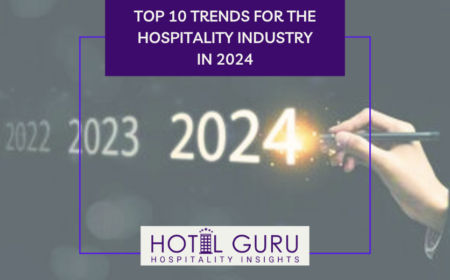RARCON – 2020 Lodging Forecast
Register for RARCON HERE.
In just two weeks, we will be presenting everything from digital marketing, revenue management, hotel sales and operations, to legal trends, hotel finance and a deep dive into southern California’s lodging industry. On a national basis, 2019 was marked by a modest slowdown for the hotel industry. This decline has been primarily driven by a decrease in business investment, business confidence, trade fears and the “year before an election year” mindset, where many expect a slight uptick in 2020, even after 10 straight years of growth.
“A slide in business travel is expected to continue through the start of 2020 before beginning a soft recovery in Q3. This slowdown should see unemployment tick upwards, but elevated personal savings, low interest rates, moderate inflation, and healthy consumer confidence levels should prevent a steep decline in consumer spending,” according to Tourism Economics. GDP growth is expected to continue in the 2.3 percent range (actual GDP growth was 2.3% in 2019) this year according to Bernard Baumohl of the Economic Outlook Group.
Based on that not so robust economy, lodging industry fundamentals have been decelerating as we enter the new decade of the ‘20s. Further, Coronavirus impacts are unknown at this time and could materially impact global and US room demand. STR reports that supply will grow at 1.9% in 2020 and will continue at that pace in 2021. Demand will grow at 1.6% in 2020 and is anticipated to pick up to just 1.7% in 2021, continuing to drop occupancy levels slightly. National occupancy will drop .3% in 2020 and will drop another .1% in 2021 with average rates up modestly at .3% in 2020 and .6% in 2021. That leaves RevPAR flat in 2020 and up .5% in 2021.
According to STR, luxury will post the biggest gains at 1.2% in ADR and 0.9% in RevPAR. Looking ahead to 2021 independent hotels are projected to have flat occupancy growth and 1% RevPAR growth while all other segments are expected to report declines in occupancy. Again, in 2021 luxury is projected to show 1.3% ADR growth.
Operational Performance
Hoteliers can still optimize the performance of their assets, by focusing on creating demand. It is paramount to focus on marketing, sales and revenue strategies that create new demand – sales efforts should be proactive, revenue management requires micro-management of brand revenue managers, distribution strategies and tactics should be driven by a return-on-investment analysis and marketing must be digital and aggressively in pursuit of everything from social channels to remarketing and personalization.
Considering that revenues will be difficult to grow in a slow-growth environment, proactive labor cost management strategies to enhance recruitment, training and retention efforts will help reduce turnover and increase social media and guest satisfaction scores. Slower RevPAR growth creates an opportunity to finalize capital projects with less disruption and/or displacement.
Trends from 2020-2030
These trends include new privacy regulations this year in California, expanded use of artificial intelligence at a fast pace, digital transformation, sustainability and more. The presidential election and local races can have a big impact on the economy as they determine what we want as a nation, state and city. Major issues include immigration and border security, foreign relations, health care, women’s reproductive rights, education, the environment, guns, regulations, trade, defense, the economy and all of the state and local regulations and issues.
Technology changes in the form of digital transformation will happen and quickly. Intelligent automation, moving to the cloud, cybersecurity and overall digital disruption will rule this decade. Millennials are taking over and Generation Z is right on their heels, already spending dollars on experiential travel.
More extreme weather patterns like wind, rain and high tides coupled with the need for cybersecurity are two areas we must be prepared for in the coming years. Amazon and particularly Google will become forces to be reckoned with in the lodging distribution game. Commissions from hotels alone are low hanging fruit for them. Amazon has access to customers and has a competitive advantage in understanding customer behavior. Google owns search. They will be direct players soon enough and Google Trips could have a significant impact on metasearch and marketing overall. It is up to us as hoteliers to ensure that a competitive OTA field means lower commissions.
Robotics can be utilized for delivery to rooms and vacuuming, digital key reduces the need for that extra desk staff and all of these free up the need for managers to perform tasks. A positive work culture will become even more important and the cost of replacing team members should keep us honest about taking care of great employees.
According to Kalibri Labs, average length of stay continues to compress, making optimal channel mix more important than ever. Growth in hotel demand exceeded supply growth in 2019 as evidenced by increases in both Guest Paid RevPAR and Occupancy. Total US loyalty contribution increased +7.6% year-over-year to 56.0% of total bookings in 2019. When the book direct campaigns began in 2016, total yearend US loyalty contribution was 47.9%.
We expect cancellation policies will be tightened up this year. Disincentives will be introduced to avoid guest booking and canceling. After all, it is expensive just to secure a reservation today – time to ensure the guest shows up or pays. We expect hoteliers to pay more attention to the entire booking process by understanding all traffic sources, which pages are the most common along the booking path and how those metrics shake out. Understanding paid media results and the impression that guests receive when looking at their web site is very important!
Wellness will add value to the guest stay more going forward. Talent has become the new currency and office innovation could actually make hotels more of the center of the universe as their open spaces are appreciated by millennials and Gen Z alike. Sustainability, with the advent of “netzero” carbon impact will become a profitable concept and autonomous cars are not more than 15-20 years away. This will impact parking needs albeit not so much in the 2020s but shortly thereafter. Look for a need for more “drop off” space rather than parking space needs soon. The 2020s will be fast moving with a rapid rate of innovation in AI and other areas. Enjoy the ride!







